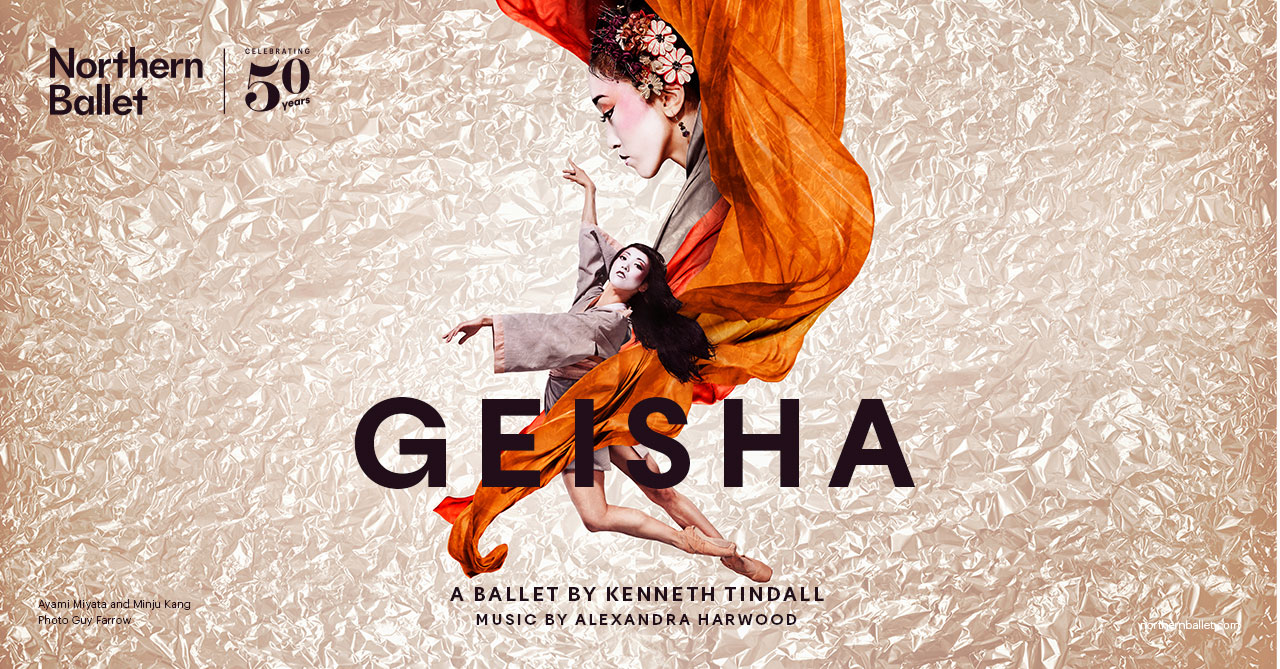Geisha (also known as geiko or geigi) means “arts person” in Japanese. Appearing in mid-eighteenth-century to entertain through dance, music and song, they offer a prime theme for a ballet. In his ninth creation for Northern Ballet, Kenneth Tindall brilliantly celebrates Japan’s cultural history through movement, music and costume.
The production follows the journey of Aiko, a trainee geisha who develops a sisterly bond with experienced geisha Okichi. They share a playful chemistry, and Aiko’s naive admiration for her trainer is felt as she keeps a watchful eye on Okichi throughout. The pair’s closing duet of scene two is particularly memorable; Tindall’s fun, youthful choreography is playful, and this is nicely enhanced by the blue-toned costumes and lighting.

The arrival of the US Navy is another standout scene. The officer’s dance was tightly performed, their military-style movements sharp like soldier toys, and full of bounce and vigour. While Okichi quickly becomes close with her US officer, Aiko is unable to endear the Consul-General she is assigned to. Frustrated and ashamed, she flees the geisha house and ends her life.
Act II opens into the darkness of the spirit world, and follows Aiko, now a ghostly character as she comes to terms with her death. The second half leaves the exquisiteness of Act I’s Geisha House and moves into the darkness of the spirit world. Through this, Tindall has created a production of brilliantly juxtaposing moods, although he has maintained cohesion and the ballet is not one of two halves. Despite being transformed into a ghostly spirit, Aiko’s personality remains familiar. Although Act II takes on a darker mood, it does not lose the brilliance and beauty of the first half. Lightness is maintained through stringed up lanterns, and the swirling choreography of the spirits is mesmerising and lyrical.

Alexandra Harwood’s composition provides a rhythmic melody for the performance. Japanese drumming and flute playing interlace the score, providing a driving sound to carry the choreography and convey the fast-paced narrative. The inclusion of a choreographed taiko drumming section during Act I provides a moment of artistic cohesion to really blend movement and music .
Christopher Oram’s costumes were well-executed. During Act II, the spirits of the dead had a simple, consistent, aesthetic which enhanced the use of lanterns. The geisha girl’s dresses were opulent, however, the numerous slits in the skirts were a little problematic as their movement detracted from the intricacy of the geisha choreography.

Created with the help of historical consultant Lesley Downer, the production felt culturally well-informed and sensitive. My initial pre-concerns that that the performance might convey an essentialised, caricaturist depiction of Japan were disproved.
Northern Ballet are renowned for their unique storytelling. With their pieces focused around narratives as opposed to following the rigidity of classical productions, they always offer something entirely new. This refreshing approach makes their performances appealing to not only existing dance fans, but (more importantly in an age of waning arts engagement) to non-ballet-goers who might typically be put off by the ‘girls in pink tutus’ expectation. Geisha is far from this stereotype, and Tindall and his team have done a marvellous job of transporting their audiences to 1850s Japan.
Geisha is on show at the Leeds Grand until 21 March, and touring nationwide until 16 May. northernballet.com

